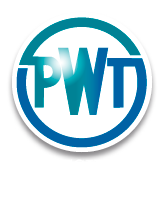Galvanising Plant Process
Galvanising Plant Process
• Pay-off section
• Cleaning and rinsing section
• Heat Treatment Furnace
• Galvanising System
• Take-up frame
The Payoff section
At the start of the process the wire pays off turntables and overhead Wapping arms or spool units, and on through guide rollers for entry into the cleaning and rinsing section.
Cleaning and Rinsing Section
All traces of wire drawing lubricant are removed from the wire prior to galvanising when the wire is passed through alkali cleaning and water rinse tanks.
The tanks are equipped with individual pumping systems and are easy to thread up. Air knives are provided on all tanks to minimise carryover from one tank to another – the final air wipe is also for drying the wires so that it enters the furnace in a clean, dry state.
Heat Treatment
PWT utilises a special design that allows the wire to be prepared for galvanising without the need for acid cleaning or fluxing.
Our process achieves this environmentally friendly outcome by heating the wire in a gas atmosphere, which begins at the down-tube and ends at the wire entry end – providing protection from oxidisation to the wire and an excellent medium for transferring heat into the wire for annealing and preparation of the wire for galvanising.
The Heat Treatment furnace itself is made up of a number of modules for several reasons:
1. Ease of shipping, using general-purpose containers
2. To facilitate your entry to the galvanising market on a minimum capital investment basis (with the ability to purchase more modules as sales increase)
3. The ability to relocate the furnace simply and easily at any future time.
4. Furnace modules are easy to maintain, ensuring long life at minimal cost
The number of zones of heating control depend on the number of modules required for a set production rate, the type of heating used (gas or electric), and the number of lines across the furnace.
The zone control options can include:
• Digital controllers with fuzzy logic control, which communicate back to the furnace computer, with printer;
• Furnace software is fully developed to enable mimics generation, reports, trends, history etc.;
• Management can check the furnace operation, ensuring the plant is operating as programmed, even outside normal hours of work.
The PWT Heat Treatment process is unique because it raises the temperature of the wire only once, and then reduces it to the galvanising temperature for perfect hot zinc bonding.
The Galvanising System
This part of the process is also unique to PWT’s technology because it allows the customer to do single dip Galfan® (ZNA15%) or ZNA110% alongside the standard zinc
The process starts at the cooling section where the wire is cooled prior to entering the zinc bath, creating nil to minimal heat input necessary for the operation of the galvanising furnace.
The wire takes a downward angle through the zinc until it comes in contact with a castable skid and changes to a vertical path up through the zinc before entering the wiping process EMW™, Gas or Pad.
With EMW™, Gas and Pad wiping, the wiping boxes are designed for high quality wiping in a vertical path through the wiping box, ensuring a uniform coating around the wire.
The EMW™, Gas and Pad wiping boxes can be changed from one process to the other very easily and quickly. Combination boxes are used for some customers.
Quench and Wax System
After galvanising the wire is passed through primary and secondary water quench systems to cool the wire. The wire, if required, is then immersed in a wax system to lubricate the wire and provide protection for storage.
Air wipes are used for the primary and secondary quenches, waxing system and final drying. If waxing is not required on some or all lines, these lines can be isolated.
Take-up Frame
The Take-up Frame for wire accumulation offers various options for the take-up collection on to former (carrier) via a dead-block rotohead unit, or vee-track single, double or triple size. All options on the former have the choice of a removable pattern-laying unit.
Both the Take-up and Pattern-lay units have individual variable speed drives to maximise the flexibility of operating a different speed per line, per wire and per coat-weight requirement.
The spooling option is desirable for fine wire operations, because the control of the wire operating from spool to spool is excellent, minimising breakages and maximising the speed of operation.
Lines can be designed to suit customer requirements.
